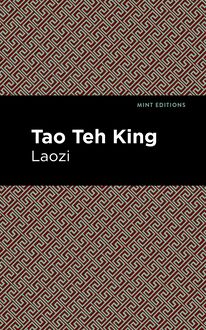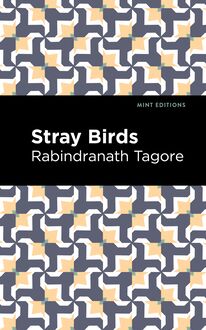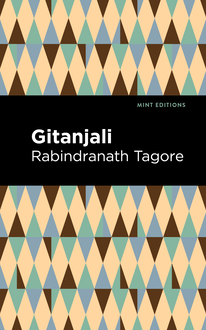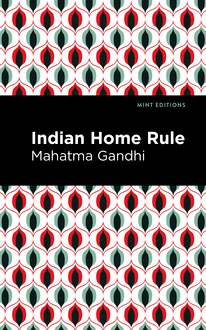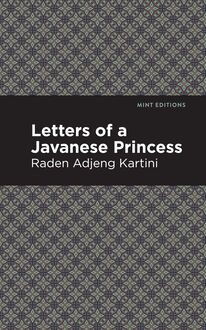-
 Univers
Univers
-
 Ebooks
Ebooks
-
 Livres audio
Livres audio
-
 Presse
Presse
-
 Podcasts
Podcasts
-
 BD
BD
-
 Documents
Documents
-
- Cours
- Révisions
- Ressources pédagogiques
- Sciences de l’éducation
- Manuels scolaires
- Langues
- Travaux de classe
- Annales de BEP
- Etudes supérieures
- Maternelle et primaire
- Fiches de lecture
- Orientation scolaire
- Méthodologie
- Corrigés de devoir
- Annales d’examens et concours
- Annales du bac
- Annales du brevet
- Rapports de stage
La lecture à portée de main

Vous pourrez modifier la taille du texte de cet ouvrage
Découvre YouScribe en t'inscrivant gratuitement
Je m'inscrisDécouvre YouScribe en t'inscrivant gratuitement
Je m'inscrisEn savoir plus
Vous pourrez modifier la taille du texte de cet ouvrage
En savoir plus

Description
The Poison Tree (1873) is a novel by Bankim Chandra Chatterjee. Originally serialized in Bangadarshan, a popular literary magazine founded by Chatterjee in 1872 and later edited by Rabindranath Tagore, The Poison Tree is a story that engages with the subject of widow remarriage. “The river flowed smoothly on—leaped, danced, cried out, restless, unending, playful. On shore, herdsmen were grazing their oxen—one sitting under a tree singing, another smoking, some fighting, others eating. Inland, husbandmen were driving the plough, beating the oxen, lavishing abuse upon them, in which the owner shared.” With his wife’s blessing, Nagendra sets out on a journey by boat down the river. When a sudden storm forces him to leave his boat for safety, he comes across the ruined home of Kundanandini, a young widow caring for her father in his final days. When the old man dies, Kundanandini begs him to take her to Calcutta. As he begins to fall for the beautiful woman, he struggles with the demands of family, religion, and tradition, knowing that love wields power over them all. Tragic and timeless, The Poison Tree is a brilliant romance from a legendary figure in Bengali literature. With a beautifully designed cover and professionally typeset manuscript, this edition of Bankim Chandra Chatterjee’s The Poison Tree is a classic of Bengali literature and utopian science fiction reimagined for modern readers.
Sujets
Informations
| Publié par | Mint Editions |
| Date de parution | 08 juin 2021 |
| Nombre de lectures | 0 |
| EAN13 | 9781513224022 |
| Langue | English |
| Poids de l'ouvrage | 2 Mo |
Informations légales : prix de location à la page 0,0450€. Cette information est donnée uniquement à titre indicatif conformément à la législation en vigueur.
Extrait
The Poison Tree
Bankim Chandra Chatterjee
The Poison Tree was first published in 1884.
This edition published by Mint Editions 2021.
ISBN 9781513299389 | E-ISBN 9781513224022
Published by Mint Editions®
minteditionbooks.com
Publishing Director: Jennifer Newens
Design & Production: Rachel Lopez Metzger
Project Manager: Micaela Clark
Translated by Miriam Singleton Knight
Typesetting: Westchester Publishing Services
C ONTENTS P REFACE I. N AGENDRA ’ S J OURNEY BY B OAT II. “C OMING E VENTS C AST T HEIR S HADOWS B EFORE ” III. O F M ANY S UBJECTS IV. T ARA C HARAN V. O H ! L OTUS -E YED , W HO A RT T HOU ? VI. T HE R EADER HAS C AUSE FOR G REAT D ISPLEASURE VII. H ARIDASI B OISNAVI VIII. T HE B ABU IX. S URJA M UKHI ’ S L ETTER X. T HE S PROUT XI. C AUGHT AT L AST XII. H IRA XIII. N O ! XIV. L IKE TO L IKE XV. T HE F ORLORN O NE XVI. H IRA ’ S E NVY XVII. H IRA ’ S Q UARREL . T HE B UD OF THE P OISON T REE XVIII. T HE C AGED B IRD XIX. D ESCENT XX. G OOD N EWS XXI. S URJA M UKHI AND K AMAL M ANI XXII. W HAT IS THE P OISON T REE ? XXIII. T HE S EARCH XXIV. E VERY S ORT OF H APPINESS IS F LEETING XXV. T HE F RUIT OF THE P OISON T REE XXVI. T HE S IGNS OF L OVE XXVII. B Y THE R OADSIDE XXVIII. I S T HERE H OPE ? XXIX. H IRA ’ S P OISON T REE HAS B LOSSOMED XXX. N EWS OF S URJA M UKHI XXXI. T HOUGH A LL E LSE D IES , S UFFERING D IES N OT XXXII. T HE F RUIT OF H IRA ’ S P OISON T REE XXXIII. H IRA ’ S G RANDMOTHER XXXIV. A D ARK H OUSE : A D ARK L IFE XXXV. T HE R ETURN XXXVI. E XPLANATION XXXVII. T HE S IMPLETON AND THE S ERPENT XXXVIII. T HE C ATASTROPHE XXXIX. K UNDA ’ S T ONGUE IS L OOSENED XL. T HE E ND G LOSSARY OF H INDU W ORDS
P REFACE
I had been asked by the accomplished lady who has translated the subjoined story to introduce it with a few words of comment to the English public. For that purpose I commenced the perusal of the proof sheets; but soon found that what was begun as a literary task became a real and singular pleasure, by reason of the author’s vivid narrative, his skill in delineating character, and, beyond all, the striking and faithful pictures of Indian life with which his tale is filled. Nor do these qualities suffer, beyond what is always inevitable, in the transfer of the novel from its original Bengali to English. Five years ago, Sir William Herschel, of the Bengal Civil Service, had the intention of translating this Bisha Briksha ; but surrendered the task, with the author’s full consent, to Mrs. Knight, who has here performed it with very remarkable skill and success. To accomplish that, more was wanted than a competent knowledge of the language of the original and a fluent command of English: it was necessary to be familiar with the details of native life and manners, and to have a sufficient acquaintance with the religious, domestic, and social customs of Bengali homes. Possessing these, Mrs. Knight has now presented us with a modern Hindu novelette, smoothly readable throughout, perfectly well transferred from its vernacular (with such omissions as were necessary), and valuable, as I venture to affirm, to English readers as well from its skill in construction and intrinsic interest as for the light which it sheds upon the indoor existence of well-to-do Hindus, and the excellent specimen which it furnishes of the sort of indigenous literature happily growing popular in their cities and towns.
The author of “The Poison Tree” is Babu Bankim Chandra Chatterjee, a native gentleman of Bengal, of superior intellectual acquisitions, who ranks unquestionably as the first living writer of fiction in his Presidency. His renown is widespread among native readers, who recognize the truthfulness and power of his descriptions, and are especially fond of “Krishna Kanta’s Will,” “Mrinalini,” and this very story of the Bisha Briksha , which belongs to modern days in India, and to the new ideas which are spreading—not always quite happily—among the families of the land. Allowance being made for the loss which an original author cannot but sustain by the transfer of his style and method into another language and system of thought, it will be confessed, I think, that the reputation of “Bankim Babu” is well deserved, and that Bengal has here produced a writer of true genius, whose vivacious invention, dramatic force, and purity of aim, promise well for the new age of Indian vernacular literature.
It would be wrong to diminish the pleasure of the English reader by analysing the narrative and forestalling its plot. That which appears to me most striking and valuable in the book is the faithful view it gives of the gentleness and devotion of the average Hindu wife. Western people are wont to think that because marriages are arranged at an early age in India, and without the betrothed pair having the slightest share in the mutual choice, that wedded love of a sincere sort must be out of the question, and conjugal happiness very rare. The contrary is notably the case. Human nature is, somehow, so full of accidental harmonies, that a majority among the households thus constituted furnish examples of quiet felicity, established constancy, and, above all, of a devotedness on the part of the Hindu women to their husbands and children, which knows, so to speak, no limit. The self-sacrifice of Surja Mukhi in this tale would be next to impossible for any Western woman, but is positively common in the East, though our author so well displays the undoubted fact that feminine hearts are the same everywhere, and that custom cannot change the instincts of love. In Debendra the Babu paints successfully the “young Bengalee” of the present day, corrupted rather than elevated by his educational enlightenment. Nagendra is a good type of the ordinary well-to-do householder; Kunda Nandini, of the simple and graceful Hindu maiden; and Hira, of those passionate natures often concealed under the dark glances and regular features of the women of the Ganges Valley. In a word, I am glad to recommend this translation to English readers, as a work which, apart from its charm in incident and narrative, will certainly give them just, if not complete, ideas of the ways of life of their fellow-subjects in Bengal.
Edwin Arnold, C.S.I.
London, September 10, 1884.
For the assistance of the reader, the names of the principal characters in the tale are given—
Nagendra Natha Datta
A wealthy Zemindar .
Surja Mukhi
His wife .
Debendra Datta
Cousin to Nagendra .
Srish Chandra Mittra
Accountant in a Merchant’s Office.
Kamal Mani
His wife, sister to Nagendra .
Satish
Their baby boy .
Tara Charan
Adopted brother of Surja Mukhi .
Kunda Nandini
An Orphan Girl .
Hira
Servant in Nagendra’s household .
I
N AGENDRA ’ S J OURNEY BY B OAT
Nagendra Natha Datta is about to travel by boat. It is the month Joisto (May—June), the time of storms. His wife, Surja Mukhi, had adjured him, saying, “Be careful; if a storm arises be sure you fasten the boat to the shore. Do not remain in the boat.” Nagendra had consented to this, otherwise Surja Mukhi would not have permitted him to leave home; and unless he went to Calcutta his suits in the Courts would not prosper.
Nagendra Natha was a young man, about thirty years of age, a wealthy zemindar (landholder) in Zillah Govindpur. He dwelt in a small village which we shall call Haripur. He was travelling in his own boat. The first day or two passed without obstacle. The river flowed smoothly on—leaped, danced, cried out, restless, unending, playful. On shore, herdsmen were grazing their oxen—one sitting under a tree singing, another smoking, some fighting, others eating. Inland, husbandmen were driving the plough, beating the oxen, lavishing abuse upon them, in which the owner shared. The wives of the husbandmen, bearing vessels of water, some carrying a torn quilt, or a dirty mat, wearing a silver amulet round the neck, a ring in the nose, bracelets of brass on the arm, with unwashed garments, their skins blacker than ink, their hair unkempt, formed a chattering crowd. Among them one beauty was rubbing her head with mud, another beating a child, a third speaking with a neighbour in abuse of some nameless person, a fourth beating clothes on a plank. Further on, ladies from respectable villages adorned the ghats (landing-steps) with their appearance—the elders conversing, the middle-aged worshipping Siva , the younger covering their faces and plunging into the water; the boys and girls screaming, playing with mud, stealing the flowers offered in worship, swimming, throwing water over every one, sometimes stepping up to a lady, snatching away the image of Siva from her, and running off with it. The Brahmans, good tranquil men, recited the praises of Ganga (the sacred river Ganges) and performed their worship, sometimes, as they wiped their streaming hair, casting glances at the younger women.
In the sky, the white clouds float in the heated air. Below them fly the birds, like black dots. In the cocoanut trees, kites, like ministers of state, look around to see on what they can pounce; the cranes, being only small fry, stand raking in the mud; the dahuk (coloured herons), merry creatures, dive in the water; other birds of a lighter kind merely fly about. Market-boats sail along at good speed on their own behalf; ferry-boats creep along at elephantine pace to serve the needs of others only; cargo boats make no progress at all—that is the owners’ concern.
On the third day of Nagendra’s journey clouds arose and gradually covered the sky. The river became black, the tree-tops drooped, the paddy birds flew aloft, the water became motionless. Nagendra ordered the manji (boatman) to run the boat in shore and make it fast. At that moment the steersman, Rahamat Mullah, was saying his prayers, so he made no answer. Rahamat knew nothing of his business. His mother’s father’s sister was the daughter of a boatman; on that plea he had become a hanger-on of boatmen, and acci
Attention
En entrant sur cette page, vous certifiez :
- 1. avoir atteint l'âge légal de majorité de votre pays de résidence.
- 2. avoir pris connaissance du caractère érotique de ce document.
- 3. vous engager à ne pas diffuser le contenu de ce document.
- 4. consulter ce document à titre purement personnel en n'impliquant aucune société ou organisme d'État.
- 5. vous engager à mettre en oeuvre tous les moyens existants à ce jour pour empêcher n'importe quel mineur d'accéder à ce document.
- 6. déclarer n'être choqué(e) par aucun type de sexualité.
YouScribe ne pourra pas être tenu responsable en cas de non-respect des points précédemment énumérés. Bonne lecture !
-
 Univers
Univers
-
 Ebooks
Ebooks
-
 Livres audio
Livres audio
-
 Presse
Presse
-
 Podcasts
Podcasts
-
 BD
BD
-
 Documents
Documents
-
Jeunesse
-
Littérature
-
Ressources professionnelles
-
Santé et bien-être
-
Savoirs
-
Education
-
Loisirs et hobbies
-
Art, musique et cinéma
-
Actualité et débat de société
-
Jeunesse
-
Littérature
-
Ressources professionnelles
-
Santé et bien-être
-
Savoirs
-
Education
-
Loisirs et hobbies
-
Art, musique et cinéma
-
Actualité et débat de société
-
Actualités
-
Lifestyle
-
Presse jeunesse
-
Presse professionnelle
-
Pratique
-
Presse sportive
-
Presse internationale
-
Culture & Médias
-
Action et Aventures
-
Science-fiction et Fantasy
-
Société
-
Jeunesse
-
Littérature
-
Ressources professionnelles
-
Santé et bien-être
-
Savoirs
-
Education
-
Loisirs et hobbies
-
Art, musique et cinéma
-
Actualité et débat de société
- Cours
- Révisions
- Ressources pédagogiques
- Sciences de l’éducation
- Manuels scolaires
- Langues
- Travaux de classe
- Annales de BEP
- Etudes supérieures
- Maternelle et primaire
- Fiches de lecture
- Orientation scolaire
- Méthodologie
- Corrigés de devoir
- Annales d’examens et concours
- Annales du bac
- Annales du brevet
- Rapports de stage

